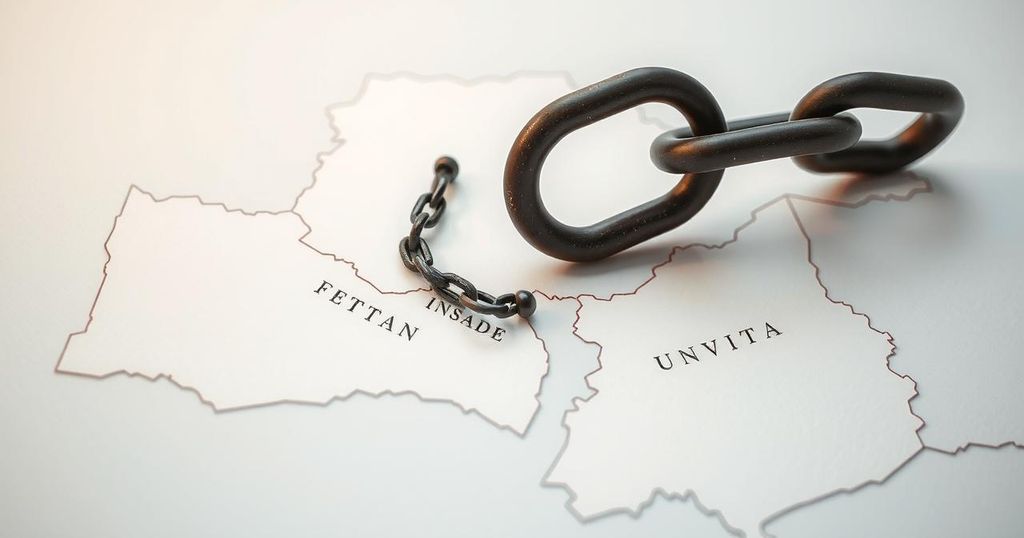The article discusses the legacy of the Assad regime and the implications of its recent downfall in December 2023. It highlights the brutal repression during the 2011 revolution and the subsequent fragmentation of Syria. Emphasis is placed on the rise of Hayat Tahrir al-Sham, the challenges faced by Kurdish groups, and the impact on the Palestinian cause, underscoring the need for continued popular movements for democracy and justice.
The al-Assad regime, led by dictator Bashar al-Assad since 2000, was characterized by its brutal anti-democratic practices and the enrichment of a small elite at the cost of the Syrian populace. His implementation of austerity measures resulted in widespread poverty; by 2011, a third of the population lived below the poverty line, particularly in southern cities where poverty rates had significantly increased.
In 2011, the revolution began as part of the wave of uprisings sweeping the Arab world, sparked by the arrest and torture of teenagers who protested against the regime. The protests were met with brutal force, leading to widespread unrest and the formation of armed groups such as the Free Syrian Army. Despite initial hopes for change, the revolution descended into chaos, exacerbated by foreign interference and sectarian violence, which significantly altered its trajectory.
The December 2023 offensive, which resulted in Assad’s downfall, was marked by the rapid advance of the Islamist group Hayat Tahrir al-Sham (HTS), revealing the regime’s internal decay. Soldiers faced disillusionment, with many abandoning their posts, while the regime’s fear-based rule had eroded its support. Sanctions and ongoing violence had left the regime impoverished, creating a vacuum that HTS aimed to fill, leading to massive public demonstrations following Assad’s exit.
Hayat Tahrir al-Sham, led by Mohammed al-Jolani, emerged as a dominant force in Idlib after the fragmentation of opposing militias. Although it initially established a crony capitalist system and suppressed dissent, popular protests forced HTS to grant limited concessions regarding minority rights and public freedoms. However, longstanding issues of governance and sectarianism remain prevalent within their control.
The Kurds, an ethnic group historically oppressed in Syria, failed to support the revolution in 2011 but seized control of northeastern regions through the Democratic Union Party (PYD). They partnered with the United States against ISIS; however, they now face threats from Turkish-backed forces aiming for Kurdish disbandment. A resurgence of the non-sectarian popular movements seen in 2011 is necessary to ensure Kurdish autonomy and broader rights within Syria.
The aftermath of Assad’s overthrow has led to Israeli military actions aimed at dismantling Syrian military capabilities, challenging perspectives on the impact of Assad’s fall on Palestinian liberation. The Assads have not been steadfast allies; their prior actions against Palestinian interests challenge the notion that their regime offered genuine support. A successful Palestinian liberation will ultimately stem from grassroots movements, necessitating a broader upheaval of existing regimes and imperialist structures in the region.
The article delves into the historical context of the al-Assad regime in Syria, outlining its anti-democratic practices and the socio-economic challenges faced by its citizens. It elaborates on the revolutionary movements that arose in 2011, the complexities of internal and external conflicts during the civil war, and the emergence of key groups like Hayat Tahrir al-Sham. Furthermore, it examines the Kurds’ position in the evolving scenario and ties these developments to the geopolitical dynamics affecting Palestine.
The fall of the Assad regime signifies a crucial juncture in Syrian history, potentially reigniting the democratic aspirations of the 2011 revolution. However, the emergence of HTS and the ongoing strife indicate that challenges remain. The Kurds face significant threats and the broader struggle for justice and democracy in Syria requires concerted, non-sectarian efforts to mobilize the populace and oppose foreign intervention. In this shifting landscape, the future of both Syria and Palestine rests on grassroots activism and the dismantlement of imperialist structures.
Original Source: solidarity.net.au






